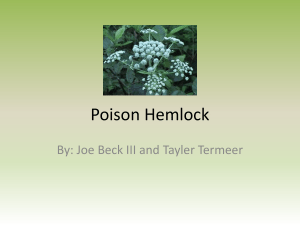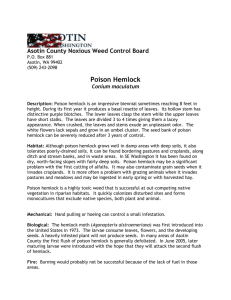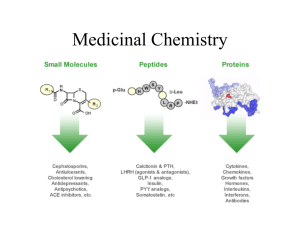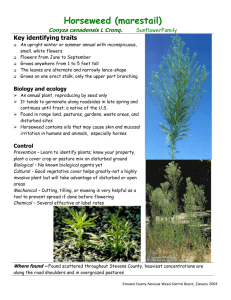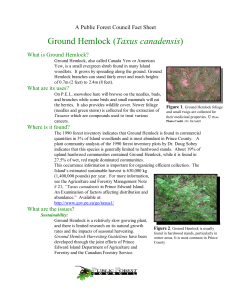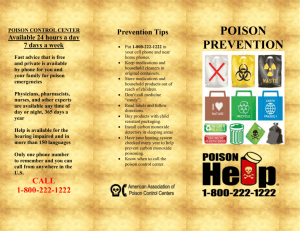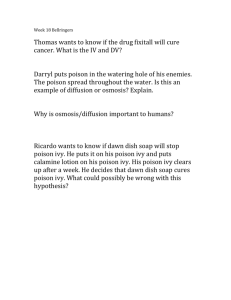MSdoc
advertisement
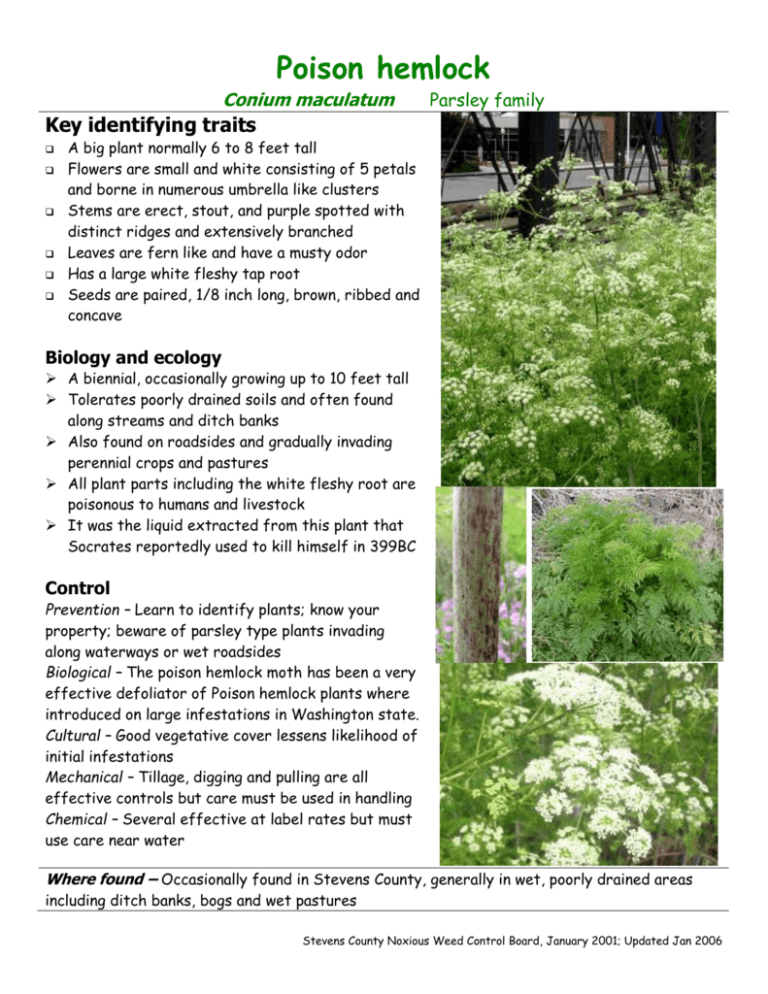
Poison hemlock Conium maculatum Parsley family Key identifying traits A big plant normally 6 to 8 feet tall Flowers are small and white consisting of 5 petals and borne in numerous umbrella like clusters Stems are erect, stout, and purple spotted with distinct ridges and extensively branched Leaves are fern like and have a musty odor Has a large white fleshy tap root Seeds are paired, 1/8 inch long, brown, ribbed and concave Biology and ecology A biennial, occasionally growing up to 10 feet tall Tolerates poorly drained soils and often found along streams and ditch banks Also found on roadsides and gradually invading perennial crops and pastures All plant parts including the white fleshy root are poisonous to humans and livestock It was the liquid extracted from this plant that Socrates reportedly used to kill himself in 399BC Control Prevention – Learn to identify plants; know your property; beware of parsley type plants invading along waterways or wet roadsides Biological – The poison hemlock moth has been a very effective defoliator of Poison hemlock plants where introduced on large infestations in Washington state. Cultural – Good vegetative cover lessens likelihood of initial infestations Mechanical – Tillage, digging and pulling are all effective controls but care must be used in handling Chemical – Several effective at label rates but must use care near water Where found – Occasionally found in Stevens County, generally in wet, poorly drained areas including ditch banks, bogs and wet pastures Stevens County Noxious Weed Control Board, January 2001; Updated Jan 2006
